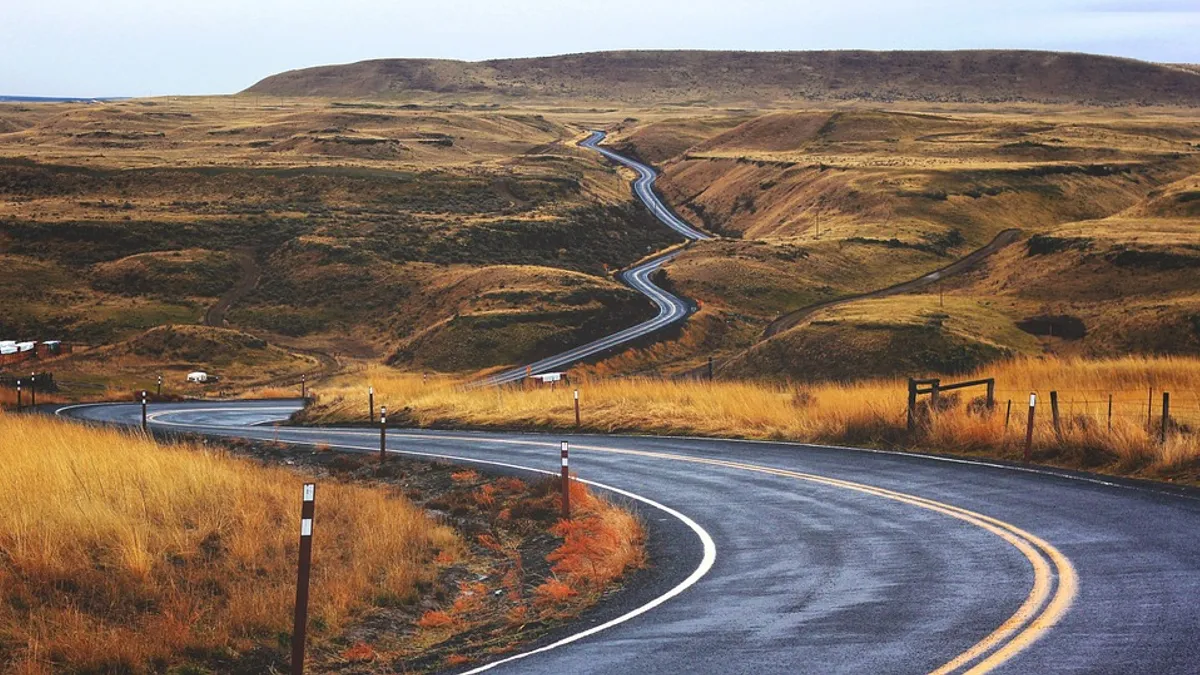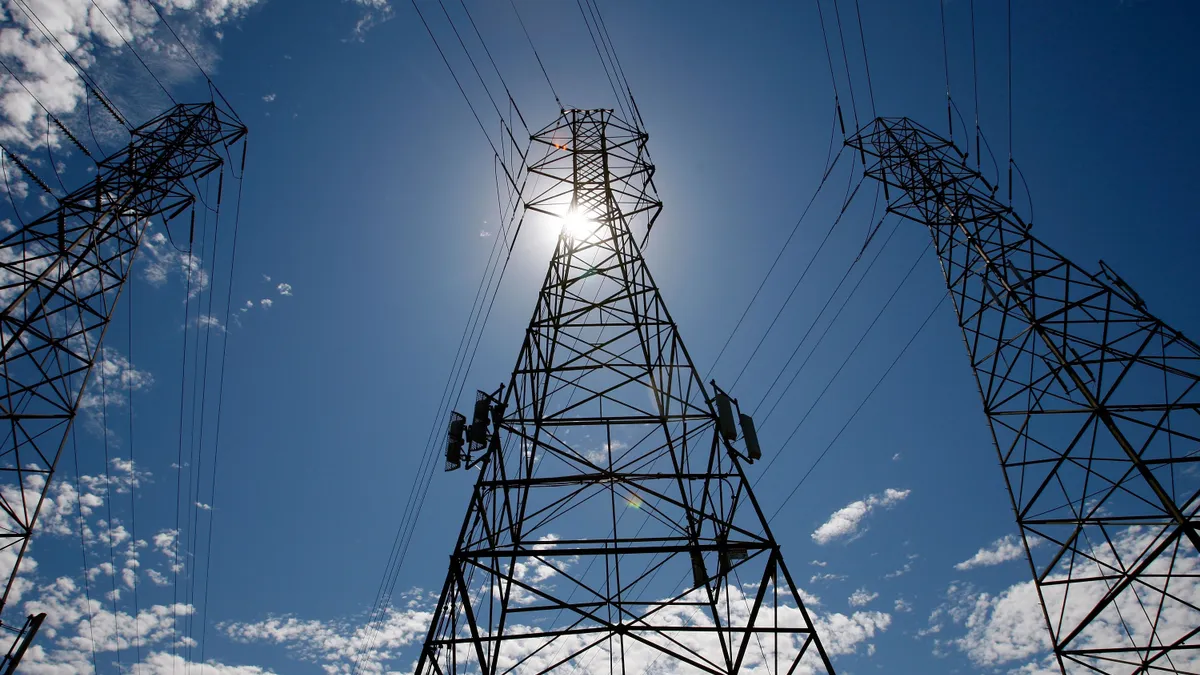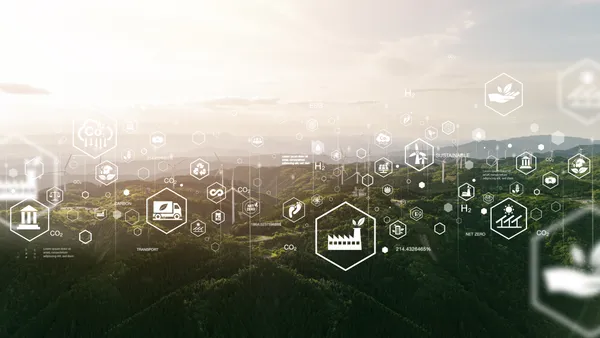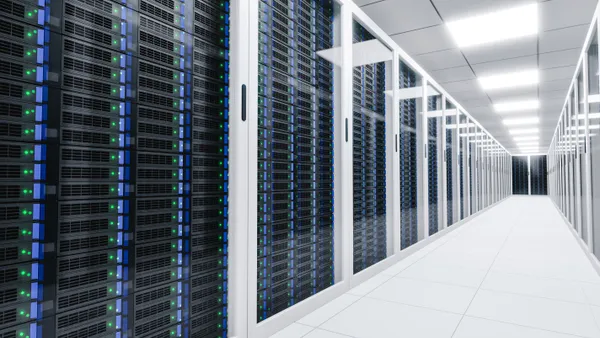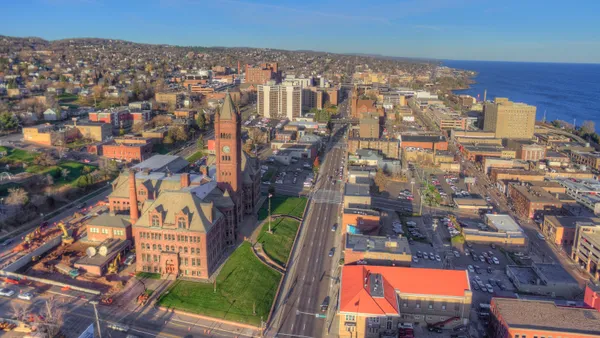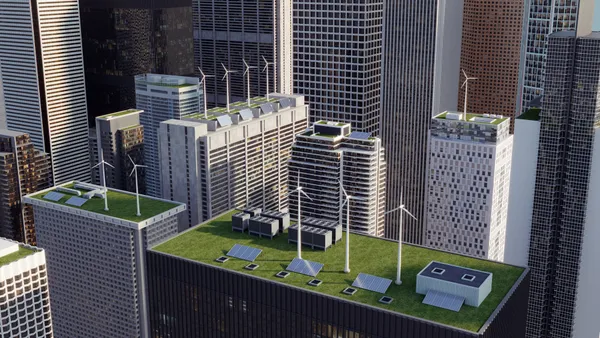Dive Brief:
- Seven Western states promised to work on a regional electric vehicle plan designed to ease travel through a web of 5,000 miles of freeways.
- The governors of Montana, Nevada, Wyoming, Utah, Idaho, New Mexico and Colorado signed a memorandum of understanding Wednesday to encourage the adoption of electric vehicles. It would include interstates 10, 40, 70, 76, 80, 84, 86, 90, 94, 15 and 25.
- Dubbed the Regional Electric Vehicle West Corridor, the collaboration would coordinate on funding opportunities, create minimum standards for charging stations, and identify and develop ways to include stations in planning and development processes, including building codes, metering policies and renewable energy projects.
Dive Insight:
This is the second case where Western states pledged cooperation to build a network of EV charging stations, anticipating a boom in these vehicles. Utility trade group Edison Electric Institute predicted seven million electric vehicles could hit the road by 2025.
At the end of last year, governors from Utah, Nevada and Colorado unveiled plans to link their states through a charging network spanning 2,000 miles of highway. Now four other states have joined the effort.
EV advocates are realizing focusing on a single state to tackle range anxiety does little to alleviate concerns. In turn, concepts like the West Coast Green Highway and the U.S. Department of Transportation's national network of “alternative fuel” corridors spanning 35 states, are part of the efforts to boost adoption and address those concerns.
Separately, the U.S. Department of Energy’s National Renewable Energy Laboratory on Wednesday released a report that "quantifies how much charging infrastructure would be needed in the United States to support various market growth scenarios for plug-in electric vehicles."
The study found that "a few hundred corridor fast-charging stations could enable long-distance EV travel between U.S. cities ... [while] about 8,000 fast-charging stations would be needed to provide a minimum level of urban and rural coverage nationwide," NREL said in a press release.
Utilities are also increasingly eyeing EV charging stations as ways to boost flexibility and manage intermittent resources, like wind and solar. Many western states are hotspots for wind and solar development, and striking this partnership could aid development of these renewable energy resources.
“Our state’s portfolio encourages the use of all energy assets,” New Mexico Governor Susana Martinez (R) said in a statement.
Gov. John Hickenlooper (D) noted it would promote outdoor recreation, a vital component in these states' budgets.
“Through this collaboration, we will drive economic growth and promote our outdoor recreation opportunities across our states." he said in a statement.


